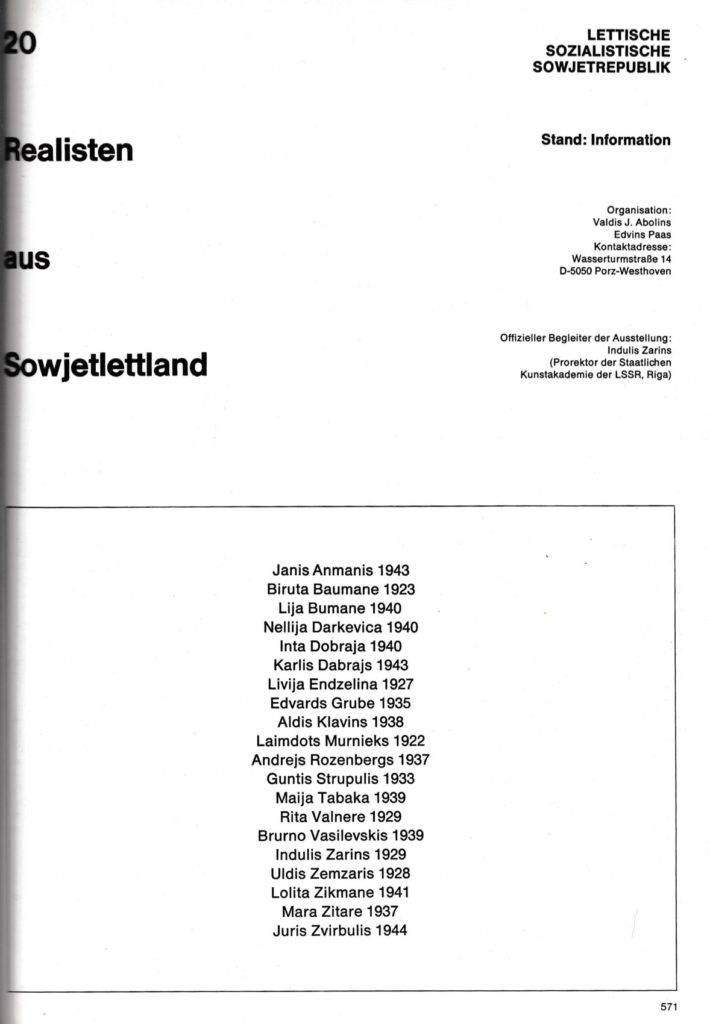
Sep 29, 1973 - Oct 7, 1973
Internationaler Markt für aktuelle Kunst 1973, Düsseldorf, Federal Republic of Germany
This exhibition, the predecessor of Art Cologne fair, was the first show of contemporary art from Latvia to be shown outside of the Eastern Bloc during the so-called years of stagnation in the Soviet Union. It was initiated and organized by Latvian emigre Valdis Āboliņš (1939–1984), a Fluxus curator and mail artist, who at that time was inspired by critical theory and the ideas of the New Left, and was looking for opportunities to turn them into practice. Through the exhibition he intended to raise a discussion of the “Marxist dialectic” in art within the socialist bloc and confront Western stereotypes about socialist realism.
The selection of the artists was a difficult compromise between Āboliņš and the functionaries in Latvia, who agreed to the exhibition only because they saw it as a welcome political opportunity to provoke the Latvian exile community in the West. The painters included were young and mid-career artists who were highly regarded in the official art scene. The works of several of them departed from the official course of Soviet realism, showing photorealistic or surrealistic moods (Maija Tabaka, Bruno Vasiļevskis, Līvija Endzelīna, Lolita Zikmane).The work of others no longer corresponded to the canon of socialist realism neither in content nor in style; instead these artists revealed the slow transformation of realism at that time, following the general lines of the art system.




